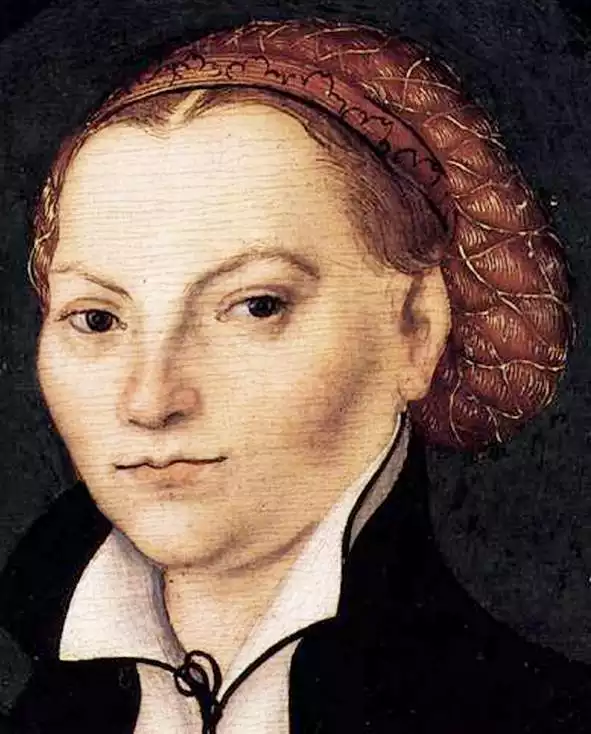
Katharina von Bora lived an extraordinary life filled with hope and courage. Born in 1499 to an impoverished German noble family, Katharina entered a convent at age five, embarking on what was expected to be a quiet life of prayer as a nun. Yet Katharina longed for more. At age 24, she and 11 other nuns bravely fled the convent, escaping to freedom with the help of Martin Luther, an outspoken monk who had just begun speaking out against Church corruption. Defying family pressure and social conventions, Katharina soon married Martin Luther, becoming his trusted partner as the Protestant Reformation unfolded around them. Though she faced immense criticism, Katharina was undeterred, rising to the occasion with fierce intelligence and grit, proving one courageous woman can change the course of history.
The Runaway Nun Who Married The Great Reformer
Katharina von Bora’s life began in humble beginnings that belied the future impact she would have. Born in 1499 to an impoverished German noble family, her father, a member of a lower ranking noble family, died when Katharina was only five years old. Her mother, left with no means to care for her three children, soon sent Katharina away to live in a convent, as many girls born without dowries often faced this fate. While expected to live out her life isolated behind the walls, Katharina developed a yearning for more.
At the convent, Katharina received an education, learning to read Latin and German – more than most women in that era. She also heard whispers of the reform movement beginning to stir questioning long-held church doctrine and hierarchy. While many opposed such heretical ideas, the seeds of Katharina’s independent thinking had been planted as she observed the extravagant living conditions for the few elite nuns, in contrast to the humble quarters for the rest of the sisters.
By the time she turned 24, Katharina felt trapped, longing desperately for freedom beyond the confines of the convent. She learned of a bold former monk named Martin Luther, excommunicated for his defiant condemnation of Church corruption, who was providing refuge for those escaping enforced cloisters. Seizing opportunity amid risk, Katharina and eleven other nuns hatched a plot under darkness to break free by hiding in empty herring barrels on a merchant’s cart, rolling themselves right out of the convent walls to liberation.
Their remarkable and dangerous bid for freedom succeeded largely thanks to Martin Luther, the very man rapidly becoming the face of the Protestant Reformation which advocated for individuals to interpret the word of God themselves without institutional control. Though Luther had recently skewered monasticism in his writings, he took pity on the escaped nuns, helping facilitate new homes and employment for them in sympathetic German towns.
When Katharina arrived in Wittenberg seeking Luther’s aid, the 21 year age difference hardly deterred her interest in the intelligent reformist. Never considering marriage growing up, Katharina now saw vestiges of a hopeful partner in the steadfast Luther even amid his controversial stances rattling Europe. For his part, Luther, formerly a celibate priest, began reconsidering his solitary path after meeting the learned and inclined Katharina. Their shared dedication to the reform movement seeded an affection that bloomed into love, despite concerns from some over what signal this “scandalous” marriage of a priest and nun would send.
At age 26, Katharina became Frau Luther, newly married in 1525. While wifely roles in the 16th century were largely domestic, Martin treated Katharina as far more than just a housekeeper, deeply valuing her intellect. Together, they paved new ground, debating theology and ethics as Katharina actively participated in Martin’s influential work. She proved herself an excellent household manager also, using excellent organizational skills to provide an open, vivacious home for Martin’s ever-growing reform activities and the constant flood ofhousehold guests. Katharina took this in stride, raising an exemplary family while becoming Martin’s most trusted confidant in good times and bad. Even when Martin died unexpectedly in 1546, Katharina persevered independently for several years more until her passing in 1552 at age 53.
Largely unsung in her own era, Katharina proved one of history’s most unlikely heroines. Her courage in escaping the parameters imposed upon her and perseverance alongside Martin Luther as an exemplary partner reveal much about tenacity required of reform pioneers. Katharina von Bora refused to accept the status quo, instead rising above through her faith and grit to change the course of religious history forever. Her bravery opened doors for so many other women since to engage in theology, education, ministry, and leadership. Now, nearly 500 years later, Katharina’s legacy of passionate partnership continues inspiring.
Conclusion
Katharina von Bora’s remarkable journey from cloistered nun to intellectual partner of the Great Reformer demonstrates conviction and courage’s power to drive progress. Her gutsy convent escape opened up unimaginable possibility, epitomizing the restless spirit questioning doctrine dictating women’s confined lives. Katharina refused societal constraints, leading steadfastly by Luther’s side and proving through action that a woman could capably manage estates, engage in discourse, provide counsel, raise children, organize enterprises, display business acumen, and influence reform. This stalwart, resilient woman partnered as Martin Luther’s equal, their bond altering not just faith but perceptions on marriage. Largely unappreciated then, today Katharina inspires wherever courage overcomes convention’s limits. Her indelible partnership catalyzed Reformation and blazed trails for women’s agency against odds – a legacy for the ages.
References
Pettegree, A. (2015). Brand Luther. Penguin Books.
Schultz, B. (2016). Katharina von Bora: A Reformation Life. Reformation Trust Publishing.
Roper, L. (2016). Martin Luther: Renegade and Prophet. Random House.
Brecht, M. (1985). Martin Luther. Fortress Press.
